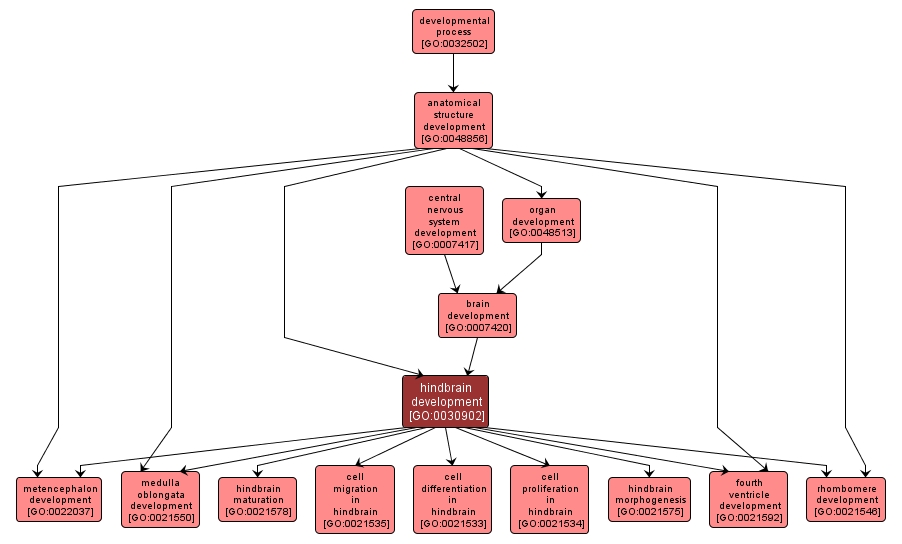| Desc: |
The process whose specific outcome is the progression of the hindbrain over time, from its formation to the mature structure. The hindbrain is the posterior of the three primary divisions of the developing chordate brain, or the corresponding part of the adult brain (in vertebrates, includes the cerebellum, pons, and medulla oblongata and controls the autonomic functions and equilibrium). |














